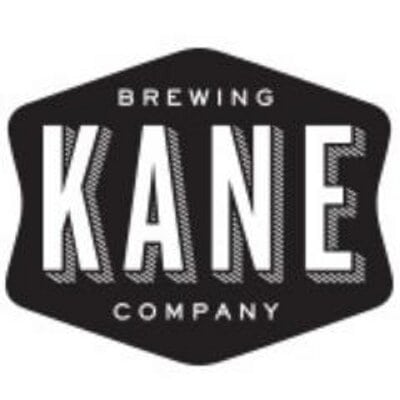 Ultramarathon aid stations are one of the best things about our sport. Truly, for many of us, these extraordinary oases can be the difference between success and failure in a long ultra. Over my career in ultrarunning, I have spent time in, literally, hundreds of aid stations and along the way have made some observations about what makes a great aid station. This column is about four characteristics of great aid stations with 10 examples of some of the truly great American ones:
Ultramarathon aid stations are one of the best things about our sport. Truly, for many of us, these extraordinary oases can be the difference between success and failure in a long ultra. Over my career in ultrarunning, I have spent time in, literally, hundreds of aid stations and along the way have made some observations about what makes a great aid station. This column is about four characteristics of great aid stations with 10 examples of some of the truly great American ones:
1. A Devoted Community of Volunteers
Most ultras depend on loyal volunteers to perpetuate their events. And, for some of the most historic and iconic races, many of these volunteers return year after year to add to the allure of their events. In no aid station is this tradition of giving back to the community more prevalent than the crew that works the Michigan Bluff Aid Station at mile 55.7 of the Western States 100. Nicknamed the ‘Michigan Bluff Social Club,’ the crew that works this wonderful spot in the heart of California Gold Country represents the best of what we have in our sport.
A new example, but every bit is inspiring, is the group that works the Lookout Mountain Aid Station at the Grindstone 100 Mile in Virginia. This remote aid station, located at the mile 30 and 72 points of this out-and-back course and accessed only by a rough jeep road and not accessible for crews or available for drop-bag service, is staffed by a loyal group from the Charlottesville Area Trail Runners Club for an entire 28-hour shift. These club volunteers have become famous throughout the region’s running community for their friendly faces, deliciously prepared foods, and unwillingness to allow anyone to DNF in their aid station.
2. Going Beyond the Call of Duty
There is something a little extra special about those aid stations that seem to have done something a bit more significant than open a table, erect a tent, and throw together some supplies. In my experience, there are four incredible aid stations in which the volunteers have gone way beyond the call of duty. Atthe Leadville Trail 100 Mile, llamas cart supplies high into the Colorado Rockies to supply the Hope Pass Aid Station.
At Western States, a crew works for two days in advance of the race to create a beach, erect platforms, and span a cable across the American River to create the Rucky Chucky River Crossing.
At the American River 50 Mile in California, a team of volunteers uses a boat to supply the remote Buzzard’s Cove Aid Station.
And, perhaps most incredibly, the hardy team that staffs the Kroger’s Canteen Aid Station on Virginius Pass at the Hardrock 100 hauls supplies up to over 13,000 feet altitude to create a full-service aid station on a narrow 12-foot x 14-foot rocky pass in the heart of the Colorado’s San Juan Mountains. Just getting to these aid stations alone is a success and a testimony to the commitment that makes our sport so great.
3. A Little Special Something
I always like surprises in the midst of ultras and two aid stations have been there to provide that little special something during my 100-mile slogs that have brought a smile to my face and even a little spring in my step. First, there is the Brighton Lodge Aid Station at the Wasatch Front 100 Mile, which is captained by a dentist. Each year, the bathroom at this aid station includes a large bowl of toothbrushes already applied with toothpaste. If you’ve never brushed your teeth at mile 67 of an ultra, you should, and Brighton is a great place to do it.
At the Sherman Aid Station at mile 28 or 72 of the Hardrock 100 depending on the race direction, each year the volunteers refurbish the National Forest Service latrine there and deck it out like a bathroom at a glitzy country club. Air fresheners, scented candles, sanitary wipes, soft toilet paper, and motivational quotations all greet the runner upon entrance into this wildland palace. Believe it or not, the last time I ran Hardrock, I spent 10 minutes in there (the first time I had ever spent that long in a pit toilet) and it turned out to be the highlight of my day.
4. Spirit of Fun
Many ultra aid stations add fun to their locales by dressing up in costumes, offering up unique products, playing loud music, or creating a cool party vibe. But two in particular do it better than anyone else, Duncan Canyon at Western States and Margaritaville at the Vermont 100 Mile. These two aid stations have, for years, epitomized the spirit of fun that is so much a part of the ultramarathon scene. If you ever have the chance to run either Western States or Vermont, I guarantee that coming into either of these wonderful parties places will bring a smile to your face.
There you have it, 10 examples of great ultra aid stations. Next time you’re out at a race, take a look around and see what else is out there in the wilds that makes our community great. Ultrarunning is a special place to be and I wouldn’t trade it for the world.
Bottoms up!
AJW’s Beer of the Week
 Since I am heading out on my birthday adventure this weekend and iRunFar Editor-in-Chief Bryon Powell is joining me along the trail, this week’s Beer of the Week comes from Bryon’s native habitat, New Jersey. Kane Brewing Company makes an extraordinary American Porter they call Sunday Brunch. An Imperial Milk Porter made with coffee, maple syrup, and cinnamon, Sunday Brunch might be best eaten with a spoon, especially after a long night out running.
Since I am heading out on my birthday adventure this weekend and iRunFar Editor-in-Chief Bryon Powell is joining me along the trail, this week’s Beer of the Week comes from Bryon’s native habitat, New Jersey. Kane Brewing Company makes an extraordinary American Porter they call Sunday Brunch. An Imperial Milk Porter made with coffee, maple syrup, and cinnamon, Sunday Brunch might be best eaten with a spoon, especially after a long night out running.
Call for Comments (from Meghan)
- What has been your favorite-ever ultra aid station? Why?
- Can you post a link to a photo of said aid station, if there is one, for everyone’s enjoyment?
